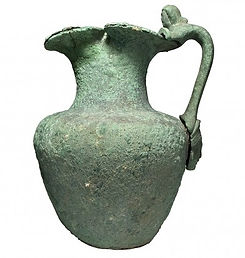
Pompeii
The town frozen by volcanic ash.


LIFE IN POMPEII
Ever since the ancient Greeks settled in the area in the 8th century B.C., the region around Mount Vesuvius and the Bay of Naples attracted wealthy vacationers who wanted to soak up the sun and the scenery. By the turn of the first century A.D., the town of Pompeii, located about five miles from the mountain, was a flourishing resort for Rome’s most distinguished citizens. Elegant houses and elaborate villas lined the paved streets. Tourists, townspeople and slaves bustled in and out of small factories and artisans’ shops, taverns and cafes, and brothels and bathhouses. People gathered in the 20,000-seat arena and lounged in the open-air squares and marketplaces. On the eve of that fateful eruption in 79 A.D., scholars estimate that there were about 20,000 people living in Pompeii and the surrounding region.
REDISCOVERING POMPEII
Pompeii remained mostly untouched until 1748, when a group of explorers looking for ancient artifacts arrived in Campania and began to dig. They found that the ashes had acted as a marvelous preservative: Underneath all that dust, Pompeii was almost exactly as it had been 2,000 years before. Its buildings were intact. Skeletons were frozen right where they’d fallen. Everyday objects and household goods littered the streets. Later archaeologists even uncovered jars of preserved fruit and loaves of bread!
Many scholars say that the excavation of Pompeii played a major role in the neo-Classical revival of the 18th century. Europe’s wealthiest and most fashionable families displayed art and reproductions of objects from the ruins, and drawings of Pompeii’s buildings helped shape the architectural trends of the era. For example, wealthy British families often built “Etruscan rooms” that mimicked those in Pompeiian villas.
Today, the excavation of Pompeii has been going on for almost three centuries, and scholars and tourists remain just as fascinated by the city’s eerie ruins as they were in the 18th century.
